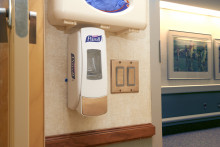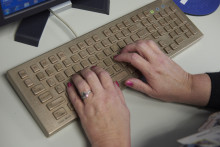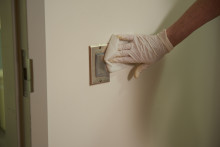Antimicrobial copper surfaces provide a second line of defense against bacteria* and must be cared for properly in order to work effectively.





As a condition of the public health registration of copper alloys as the first touch surface materials that continuously kill bacteria*, the U.S. Environmental Protection Agency required the institution of an industry "Product Stewardship" program. The purpose of the program is to ensure the proper use and care of these innovative materials. The Stewardship Program promotes the responsible use of antimicrobial copper and clarifies representative misleading statements discovered in various media. Specifically, the Stewardship Program aims to convey the following key points:
- The use of antimicrobial copper surfaces does not replace standard hospital infection control and prevention procedures and good hygienic practices such as hand washing. Antimicrobial copper surfaces should be cleaned and sanitized regularly according to standard practices, just like other hard surfaces.
- Antimicrobial copper surfaces may be subject to recontamination and the level of active bacteria at any particular time will depend on the frequency and timing of recontamination and cleanliness of the surface (among other factors).
- Antimicrobial copper surfaces must not be waxed, painted, lacquered, varnished, or otherwise coated.
- Routine cleaning to remove dirt and filth is necessary for good hygiene and to ensure the effective antimicrobial performance of the copper alloy surface. Cleaning agents typically used for traditional touch surfaces are permissible and should be used in accordance with the product label. The appropriate cleaning agent depends on the type of soiling and the measure of sanitization required.
- When cleaned regularly, normal tarnishing or wear of antimicrobial copper surfaces will not impair the antimicrobial effectiveness of the product.
- Antimicrobial copper products are not approved for use in any form that has direct food contact or as food packaging.
Antimicrobial copper surfaces may be used in hospitals, other healthcare facilities, and various public, commercial, and residential buildings for approved non-food contact surfaces. Surfaces that may be exposed to outdoor environmental conditions (e.g. handrails, shopping carts, and ATM machines) are not representative of indoor laboratory test conditions, and therefore, may impart reduced efficacy if not cleaned when visibly soiled.
For more information on how to care for and maintain antimicrobial copper products, and how these continuously active surfaces can supplement standard infection control practices, download the EPA Stewardship Presentation below.
*Laboratory testing shows that, when cleaned regularly, antimicrobial copper surfaces kill greater than 99.9% of the following bacteria within 2 hours of exposure: MRSA, VRE, Staphylococcus aureus, Enterobacter aerogenes, Pseudomonas aeruginosa, and E. coli O157:H7. Antimicrobial copper surfaces are a supplement to and not a substitute for standard infection control practices and have been shown to reduce microbial contamination, but do not necessarily prevent cross contamination or infections; users must continue to follow all current infection control practices.
All content on this website is intended for the U.S. market and audiences only.
